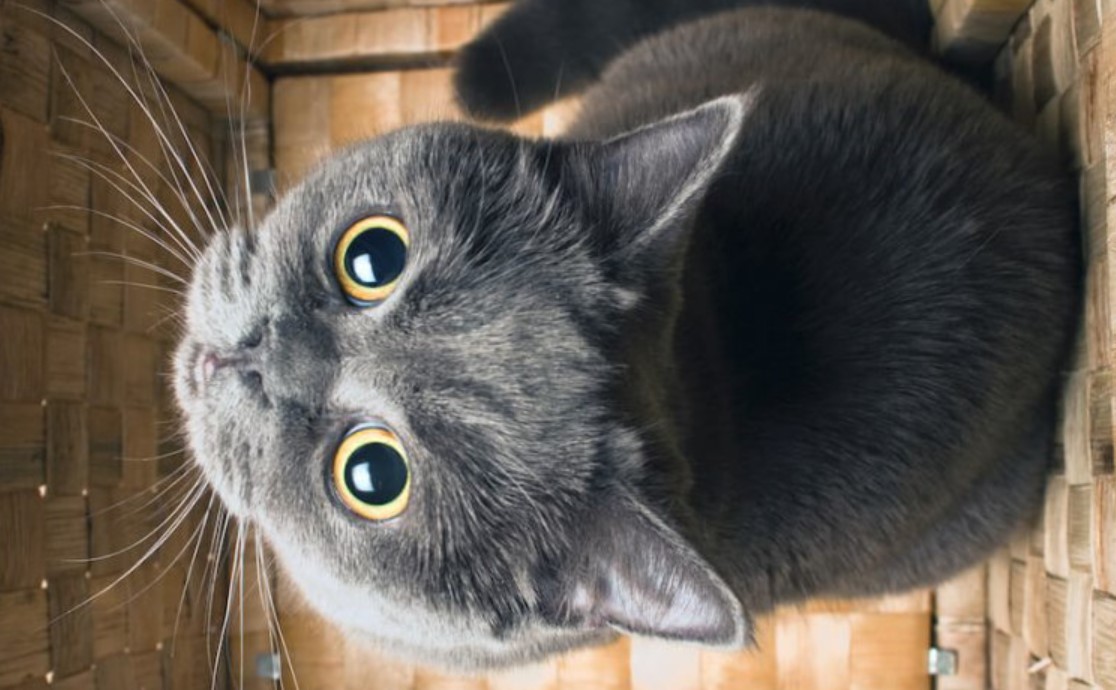The blue British Shorthair is one of the best-known and most popular pedigree cats of all. In the vernacular, it is also incorrectly referred to as Carthusian. In fact, this cat is the blue color variant of the British Shorthair.
Size: medium – large
Weight: female/ male 4-6 kg/ 7-8 kg
Life expectancy: 12-16 years
Build Short, relatively round, and compact physique
Coat Colors: Solid, Bicolor, Tortoiseshell, Colourpoint, and Tabby Pattern
Peculiarities in appearance: Develop very slowly, fully grown only after the age of 2 years
Breed type: shorthair breed
Country of origin: Great Britain
Recognized cat breed by FIFE, WCF, TICA, GCCF
Typical breed diseases: Not known
British Blue – the “wrong” Carthusian

The British Shorthair is a dignified life companion. With her loving and intelligent nature, she casts a spell over every member of the family. She enjoys the presence of familiar people, but also of her kind and dogs. She gets along well with children as long as she is treated with respect. Overall, she is an ideal family cat with her calm and warm-hearted demeanor, her bear-like looks, and her sociable character.
The British Shorthair cat appreciates an apartment with enough space and a balcony or terrace suitable for cats. She is also very happy to be released.
Appearance

The British Blue, like all Britons, is a stocky cat with a stocky build, a broad head and short, strong legs. Compared to the body, her round head with the big googly eyes seems oversized – similar to the human child scheme. (Perhaps this is why British Shorthairs are described as particularly cute and cuddly.)
Their ears are short, rounded at the ends and set wide apart. Typical are a short snub nose, thick cheeks and a strong chin. The silvery-blue short-haired fur is very dense and protruding – almost plush-like (revealing its Persian descent). In contrast, her round eyes light up in a warm shade of orange.
The British Shorthair breed is versatile in color and coat pattern. One of the currently most popular colors is the BKH Blue, which is often incorrectly referred to as Carthusian. But tabby patterns are also desirable features among breeders and owners. The British Shorthair cat became well known as the main actor in the Sheba commercial. However, the true variety (300 color varieties recognized by the FIFe) of the BKH colors is hardly known.
Interesting and worth knowing

The history of the British Shorthair probably began with the Romans, who brought this cat with them to faraway England on their campaigns of conquest. For hundreds of years, the cat lived largely unnoticed and isolated on the English isle, until the 19th century, when the cat show era dawned. The first British Shorthair cat was exhibited at Crystal Palace (London) in 1871.
After the turmoil of World War II, the breeding stock of the cat breed had dwindled to just a few cats. By outcrossing with other breeds, such as Persian cats or Carthusian cats, breeders tried to strengthen the population of the British Shorthair cat again. As a result, the breeds became more and more similar and it was difficult to distinguish between the “real” Carthusian cat (Chartreux) and the blue British Shorthair. In 1970, both breeds were even combined by the breed association FIFe. From that point on, all blue BKH cats were called Carthusian and all BKH cats with other colors were called British Shorthair. Only seven years later, after strong protests from the breeders of the original Carthusians, this classification was abolished.
Even today, the term “Carthusian” is common for blue cats – some breed clubs also use this breed name wrongly and misleadingly for their blue British Shorthair cats. Even though both breeds can now be distinguished from each other through targeted breeding, many laypeople still find it difficult to identify clear differences between the blue British Shorthair cat and the true Carthusian cat, the Chartreux.
Health

Due to their easy-going nature, the British Shorthair tends to be overweight. In general, a BKH should be large but not fat. Species-appropriate diet and in-game exercise reduce excess body fat. Interesting toys, a scratching post and a motivated master are the best ways to achieve your ideal weight.
Unfortunately, the breed is not free from hereditary diseases. Individual cats suffer from congenital heart muscle disease (HCM) or inherited kidney cyst formation (PKD). BKH breeders have a responsibility to rule out HCM and PKD via DNA testing in the breeding line. Mating a BKH cat that has tested positive is not permitted under the German Animal Welfare Act!
A species-appropriate and balanced diet for the cat is important for a strong immune system and a long and happy cat life. Obesity is considered to be the biggest and most dangerous consequence of poor nutrition. Also important is the annual check-up at the vet and the associated vaccinations against cat cold and cat disease. Outdoor cats should also be vaccinated against rabies and feline leukemia.





























